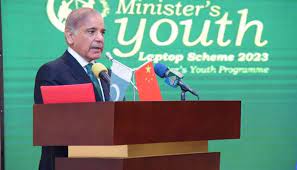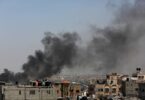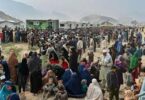Prime Minister Shehbaz Sharif Thursday said that the concerted efforts and true implementation of the vision of the Special Investment Facilitation Council (SIFC) would usher in the revolution and guarantee the prosperity of 220 million people of Pakistan. According to the Premier, the SIFC is the biggest motivating engine and vision for Pakistan’s progress and prosperity. This will bring in revolution and nothing can impede Pakistan’s progress, if this idea could be implemented in true letter and spirit. During a visit to a poverty-hit province, the Prime Minister inaugurated multiple development projects including the Khuzdar-Panjgur transmission line; construction of a two-lane Khuzdar-Basima road; water supply and distribution scheme; 1.2MGD RO Desalination Pant; and initiation of Gwadar Port dredging. The Premier also attended the groundbreaking ceremonies for the rehabilitation and upgradation of the Awaran-Naal and Awaran-Jhal Jaho roads; the Khuzdar section of M8; the Gwadar Safe City project; and the establishment of the University of Gwadar.
Gwadar, Pakistan’s first deep seaport on the Arabian Sea, lies at an important geostrategic location at the mouth of the Persian Gulf and next to the Strait of Hormuz, the important global maritime trade route that deals in nearly half the world oil trade and good transportation between Europe and East Asia. Although the idea of establishing a deep seaport on the Makran coast in Balochistan had taken birth in the early years of Pakistan’s independence and remained under discussion in successive decades, however, this magnificent project became a reality during the Musharraf era in the early 21st century. Economically most viable and strategically highly important, Gwadar deep seaport became a target of a regional conspiracy in its early stage while China Pakistan Economic Corridor (CPEC), the flagship project under the Chinese President Xi Jinping’s Belt and Road Initiative (BRI) brought this prestigious economic and regional development project into the center stage of the global rivalry between major powers in the world. Although Pakistan and China launched Gwadar and CPEC as regional connectivity and a shared economic development mechanism, that offers equal economic opportunities to all nation-states in South, Central, and Western Asia. However, New Delhi and the anti-Beijing Western bloc perceive this multi-billion dollar development project as Beijing’s military outpost to counter Malacca Dilemma, which was an all-weather strategic setback for the Chinese Peoples Liberation Army Navy in any future military standoff with its competitors.
Presently, Gwadar Deep Seaport is an important part of the widely advertised China-Pakistan Economic Corridor (CPEC). Beijing and Islamabad have agreed to enhance the port capacity through the construction of additional births, an increase in cargo tunnels and ceilings along with the establishment of a desalination plant, a Special Economic Zone (SEZ), and a floating Liquified Natural Gas Terminal that would include Gawadar in major deep seaports in Asia. In the current scenario, the Gwadar Port and the China-Pakistan Economic Corridor (CPEC) are fundamental pillars of Pakistan’s future economic and social uplift plan, which will not only boost the country’s economic and industrial growth but will act as a global trade route for China, Afghanistan and Central Asia’s trade with rest of the world including Europe and the Middle East. At the same time, this extensive road, railway, and industrial infrastructure will boost regional connectivity, interstate trade, and tourism and will lead to wider cooperation and prosperity in the region and beyond.
Historically, the Gwadar port could not attract sufficient business and shipping activities after its inauguration in 2007, primarily due to the absence of any industrial hub in its vicinity, Baloch armed insurgency, and no flow of transit trade through the deep water port facility even after the CPEC has completed a decade of development and integration. The incumbent government has resumed the development and extension work at the Gwadar port and an overall development plan has been launched to integrate less developed Balochistan, particularly Gwadar district into the mainstream areas. Historically, the Gawadar deep water port and billions dollar investment, trade, and energy projects under CPEC have not yielded their true potential so far because of haphazard policies and lack of interest of the political governments who frequently changed their priorities and plans in support of Washington and Beijing alternatively that seriously marred national interests and lost the trust of friendly nations.
Gwadar and CPEC are the game changers and their potential can turn the fate of the entire region but for that end, Pakistani leaders have to scarify their short-lived political interests, by bringing sustainability and predictability to their economic and foreign policies, which earn the confidence of foreign nations, global investors, and business community, so an economic revival could take place in the country which in turn attracts greater regional cooperation and development in the future.







